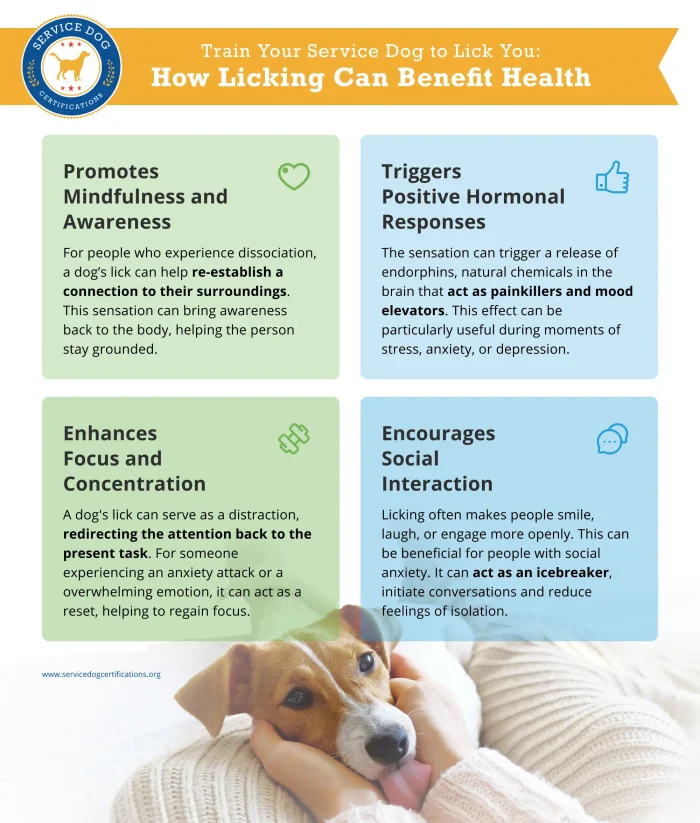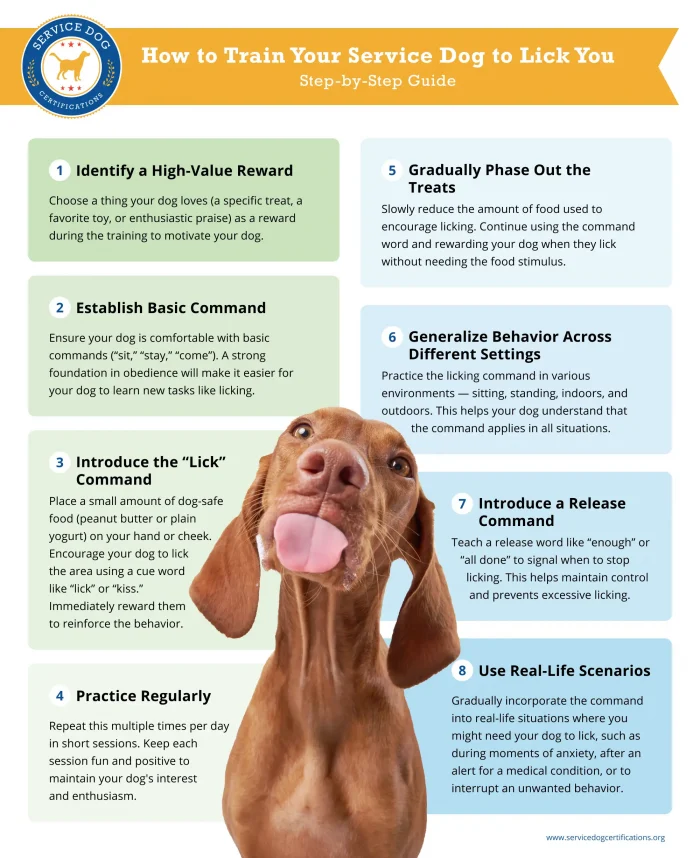Why and How to Train Your Service Dog to Lick You
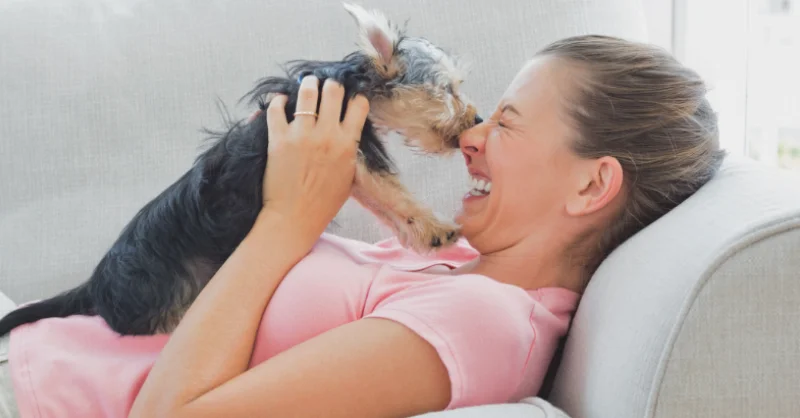
Training a service dog to lick you might seem unusual, but it’s a practical skill that can offer significant benefits, particularly for those with physical or psychiatric conditions. Service dogs and psychiatric service dogs (PSDs) are trained to help their handlers in many ways, and licking is a behavior that can be surprisingly helpful. This article will explain why training a dog to lick can be a valuable service dog task, how it benefits both physical and mental health, and provide clear, actionable steps for training.
Why Train Your Service Dog to Lick You?
Service dogs are trained to perform specific tasks that help their handlers with the various disabilities that qualify under the ADA. While most people think of tasks like guiding or retrieving objects, licking is another behavior that can play a critical role in supporting their handler. Here’s why:
- Interrupting Harmful Behaviors:
Many people with anxiety disorders, obsessive-compulsive disorder (OCD), or post-traumatic stress disorder (PTSD) may engage in repetitive or harmful behaviors like skin-picking, hair-pulling, or self-harm. A dog trained to lick its handler’s hands or face can interrupt these behaviors, providing a gentle, non-judgmental reminder to stop. - Providing Grounding During Panic Attacks:
Panic attacks can be overwhelming and disorienting. When a service dog licks its handler, it provides a tactile sensation that can help bring them back to the present moment. This action, often combined with deep pressure therapy (like the dog leaning against the handler), helps to calm the nervous system and reduce the intensity of the panic attack. - Offering Emotional Comfort:
A dog’s lick can feel like a warm, comforting gesture. Scientific studies have shown that when a dog licks its owner, oxytocin (a hormone that promotes bonding and reduces stress) is released in both the dog and the person. For someone dealing with depression, this simple interaction can provide a brief but meaningful boost in mood and create a sense of connection and comfort. - Alerting to Medical Conditions:
For individuals with conditions like diabetes or epilepsy, service dogs can be trained to detect changes in body chemistry, such as a drop in blood sugar levels or the onset of a seizure. A trained lick can serve as an alert, giving the handler a chance to take necessary action before the situation escalates. For example, the lick might wake someone from a state of low blood sugar or alert a bystander to help during a medical emergency.
How Licking Can Benefit Health
Training a dog to lick is not just about convenience or novelty—it can have profound health benefits. Here are some ways licking can help:
- Triggers Positive Hormonal Responses:
The sensation of a dog’s lick may trigger a release of endorphins, natural chemicals in the brain that act as painkillers and mood elevators. This effect can be particularly useful during moments of stress, anxiety, or depression. - Promotes Mindfulness and Awareness:
For people who experience dissociation or have trouble staying present, a dog’s lick can help re-establish a connection to their physical surroundings. This simple sensation can bring awareness back to the body, helping the person stay grounded in the moment. - Encourages Social Interaction:
Licking often makes people smile, laugh, or engage more openly. This reaction can be incredibly beneficial for people who have social anxiety or find it challenging to communicate. The dog’s action can act as an icebreaker, helping to initiate conversations and reduce feelings of isolation. - Enhances Focus and Concentration:
In therapeutic settings, a dog’s lick can serve as a mild distraction, redirecting the handler’s attention back to the present task. For someone experiencing an anxiety attack or moment of overwhelming emotion, the lick can act as a reset, helping them to regain focus.
Step-by-Step Guide: How to Train Your Service Dog to Lick You
Training your service dog to lick on command is a straightforward process that relies on patience, positive reinforcement, and clear communication. Here’s how to do it:
- Identify a High-Value Reward:
Choose something your dog loves, whether it’s a specific treat, a favorite toy, or enthusiastic praise. Use this as a reward during the training to motivate your dog. - Establish Basic Commands:
Ensure your dog is comfortable with basic commands like “sit,” “stay,” and “come.” A strong foundation in obedience will make it easier for your dog to learn new tasks like licking. - Introduce the Lick Command:
- Start by placing a small amount of dog-safe food (like peanut butter or plain yogurt) on your hand or cheek.
- Encourage your dog to lick the area using a cue word like “lick” or “kiss.”
- Immediately reward your dog with a treat, praise, or toy to reinforce the behavior.
- Practice Regularly:
Repeat this process multiple times throughout the day in short sessions. Keep each session fun and positive to maintain your dog’s interest and enthusiasm. - Gradually Phase Out the Treats:
Slowly reduce the amount of food used to encourage licking. Continue using the command word and rewarding your dog when they lick without needing the food stimulus. - Generalize the Behavior Across Different Settings:
Practice the licking command in various environments — sitting, standing, indoors, and outdoors. This helps your dog understand that the command applies in all situations, not just during specific training times. - Introduce a Release Command:
Teach a release word like “enough” or “all done” to signal your dog when to stop licking. This helps maintain control over the behavior and prevents excessive licking, which could become problematic. - Use Real-Life Scenarios:
Gradually incorporate the command into real-life situations where you might need your dog to lick, such as during moments of anxiety, after an alert for a medical condition, or when you need to interrupt an unwanted behavior.
Share this image on your site
Examples of Licking as a Service Dog Task
- Example 1:
Sarah, a veteran with PTSD, finds herself overwhelmed at a crowded grocery store. She uses the “lick” command, and her dog licks her hand, bringing her focus back to the present moment and helping her manage her anxiety. - Example 2:
John, who has diabetes, starts to feel lightheaded while out on a walk. His service dog, trained to detect changes in his scent that indicate low blood sugar, licks his face to alert him to check his glucose levels immediately. - Example 3:
Maria, who suffers from depression, feels disconnected and numb. Her service dog notices her distress and starts licking her face. The unexpected sensation brings her back to the present and lifts her spirits.
Training your service dog to lick you is more than just an interesting trick — it can be a powerful tool for managing mental health, medical conditions, and social interactions. By providing comfort, grounding, and physical alerts, a well-trained dog can make a significant difference in daily life. With patience and consistency, you can teach your service dog this valuable task, giving you a new way to connect and support one another.
About the Author: The writing team at Service Dog Certifications is made up of folks who really know their stuff when it comes to disability laws and assistance animals. Many of our writers and editors have service dogs themselves and share insights from their own experiences. All of us have a passion for disability rights and animals.
Latest Posts
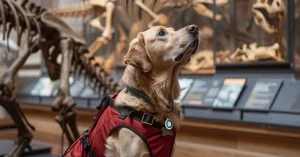
Can you bring a service dog to a museum?
Yes, you can bring your service dog to the museum! All the major U.S. museums welcome guests with service animals in accordance with the Americans with Disabilities Act (ADA). There are some areas, however, that might be off-limits. Here’s what you should know if you plan to spend a day at the museum with your […]

Read More
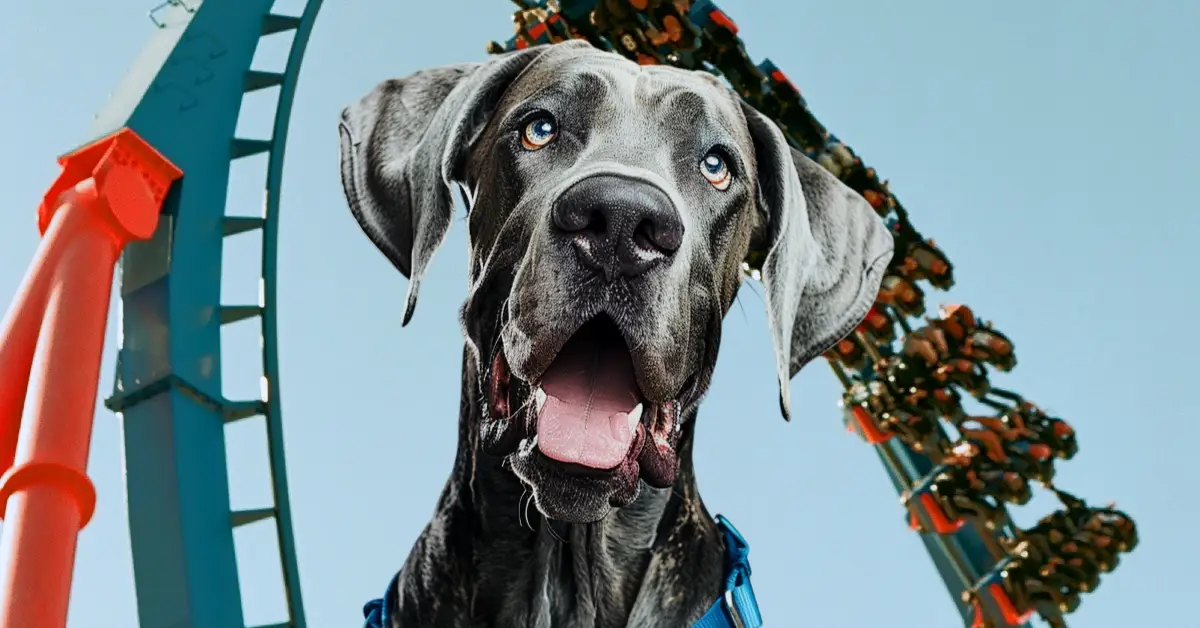
How to Bring a Service Dog to Six Flags Magic Mountain
Service dogs are welcome at Six Flags Magic Mountain so long as they are, according to Six Flags, “trained to do work or perform tasks for people with disabilities.” Of course, your dog must be housebroken and remain on a leash or harness and under your control while at the park — and the park […]

Read More
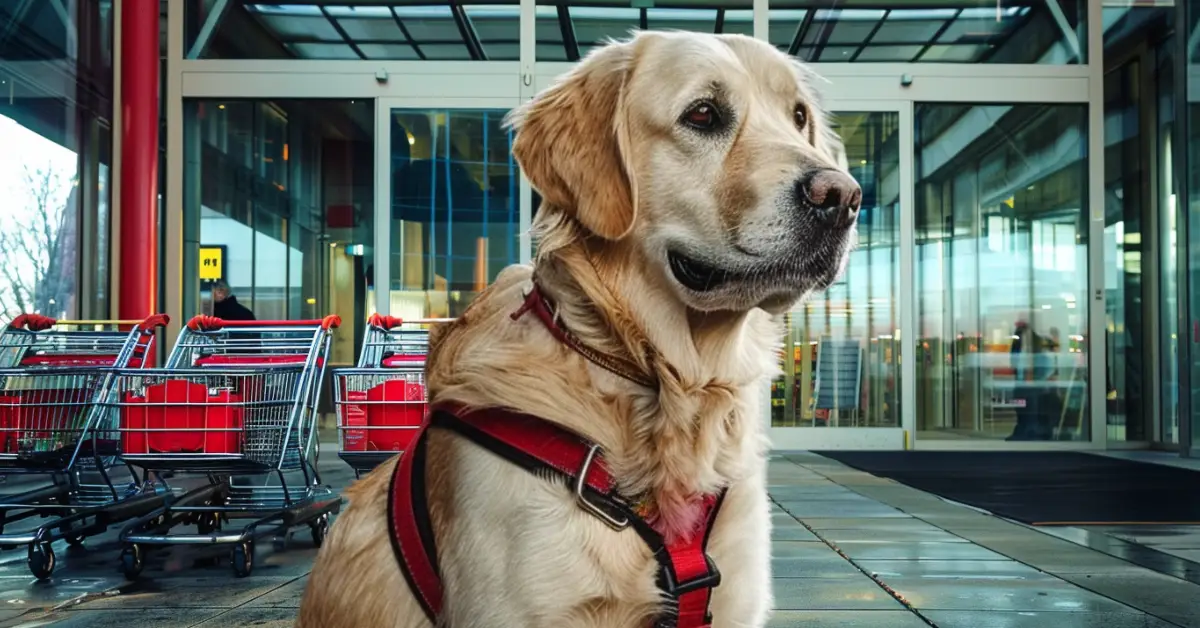
When Stores Can Refuse Your Service Dog
According to the Americans with Disabilities Act (ADA), service dogs should be allowed into any store most of the time. A store owner can legally exclude a service dog if they are actively growling, snapping at, or frightening customers, or if the dog is obviously out of the control of its owner. Ordinary behaviors — […]

Read More
